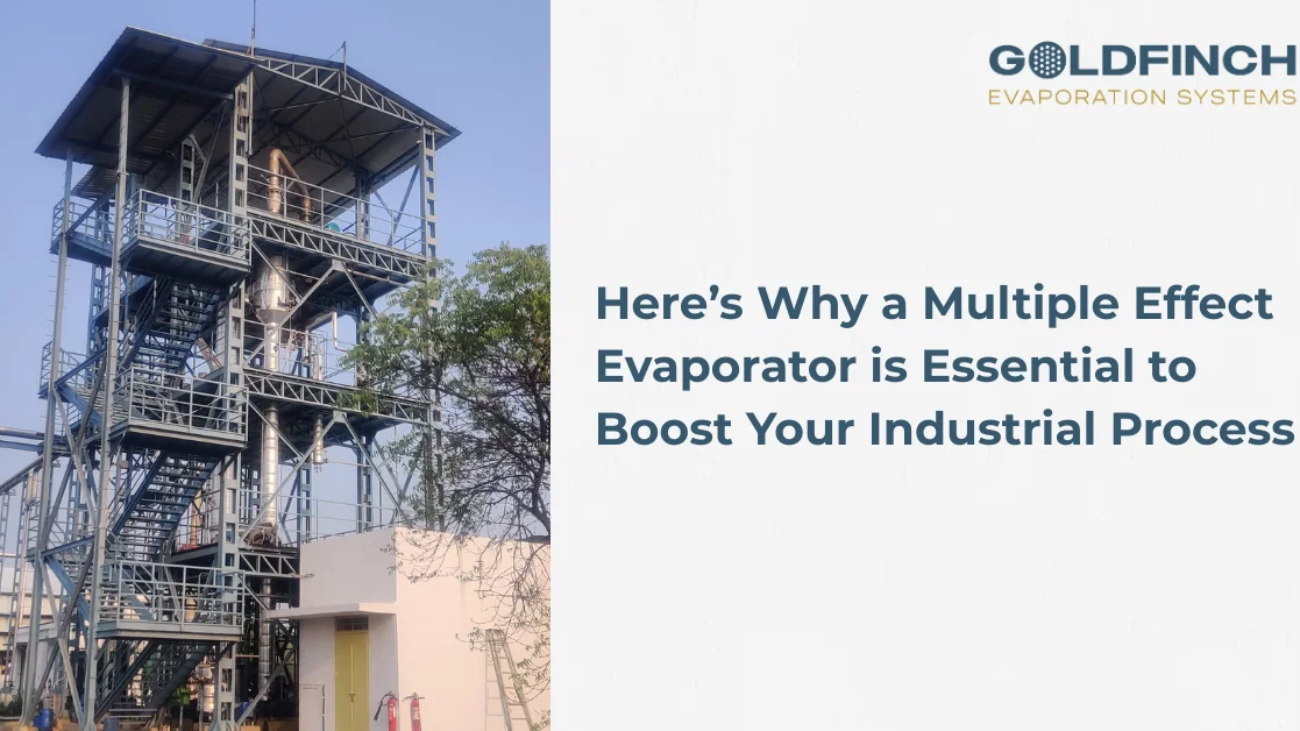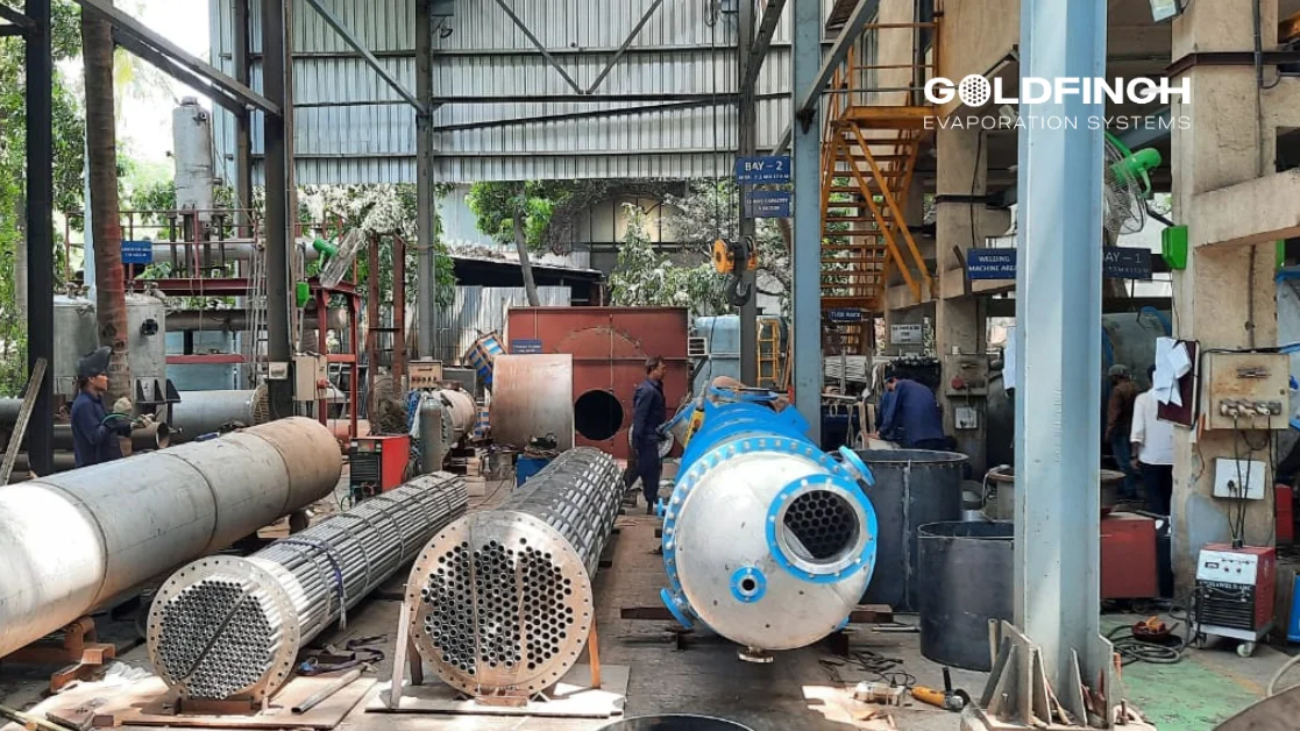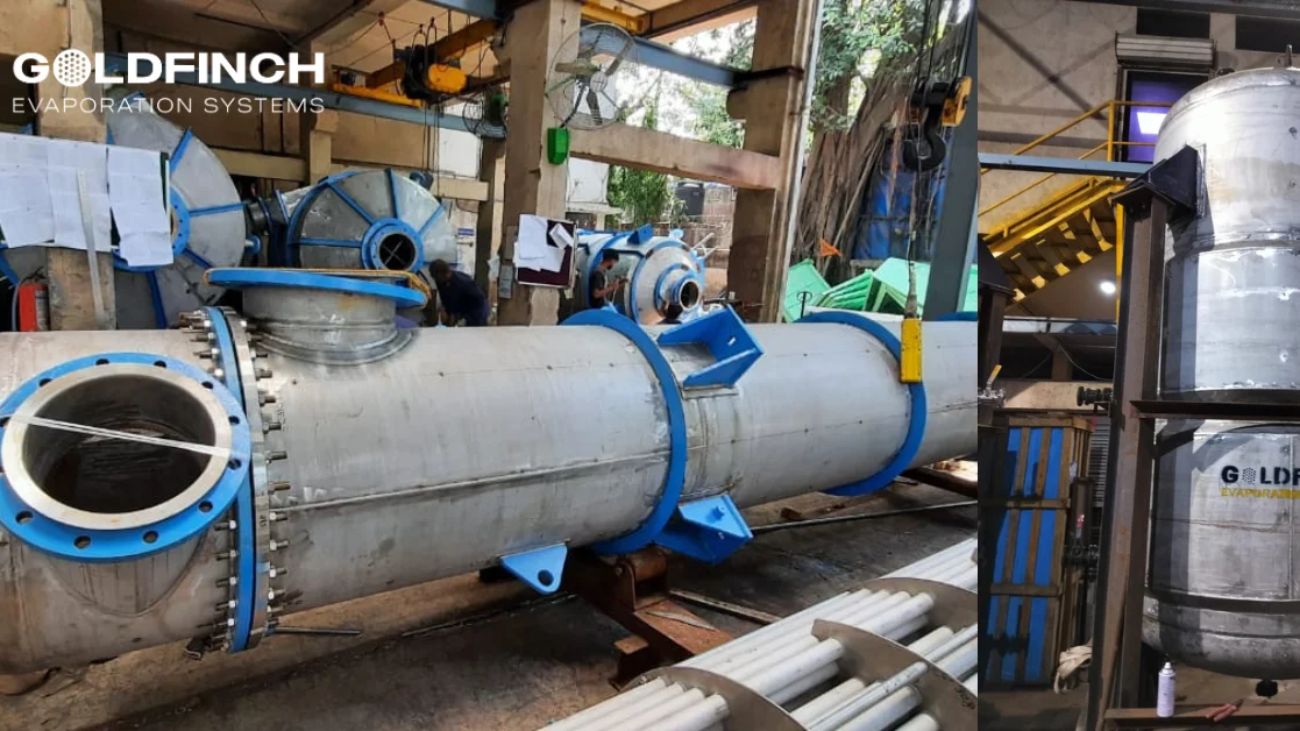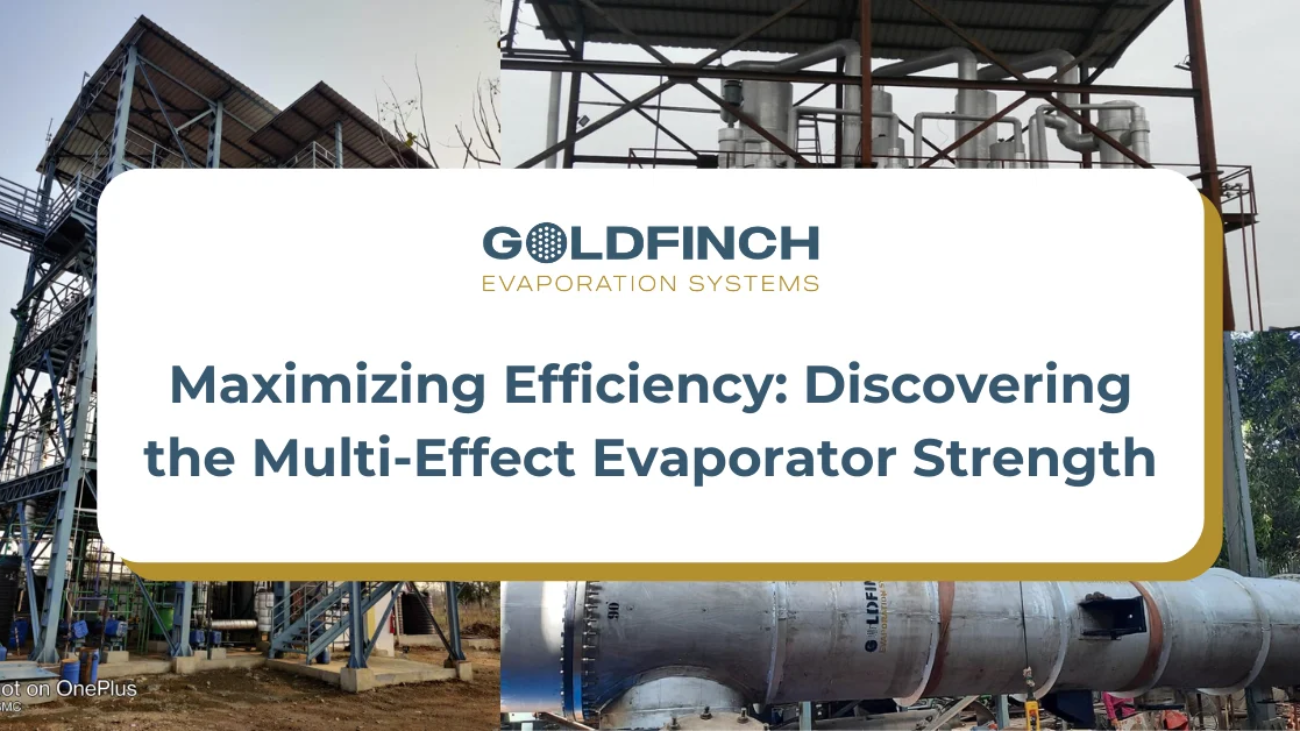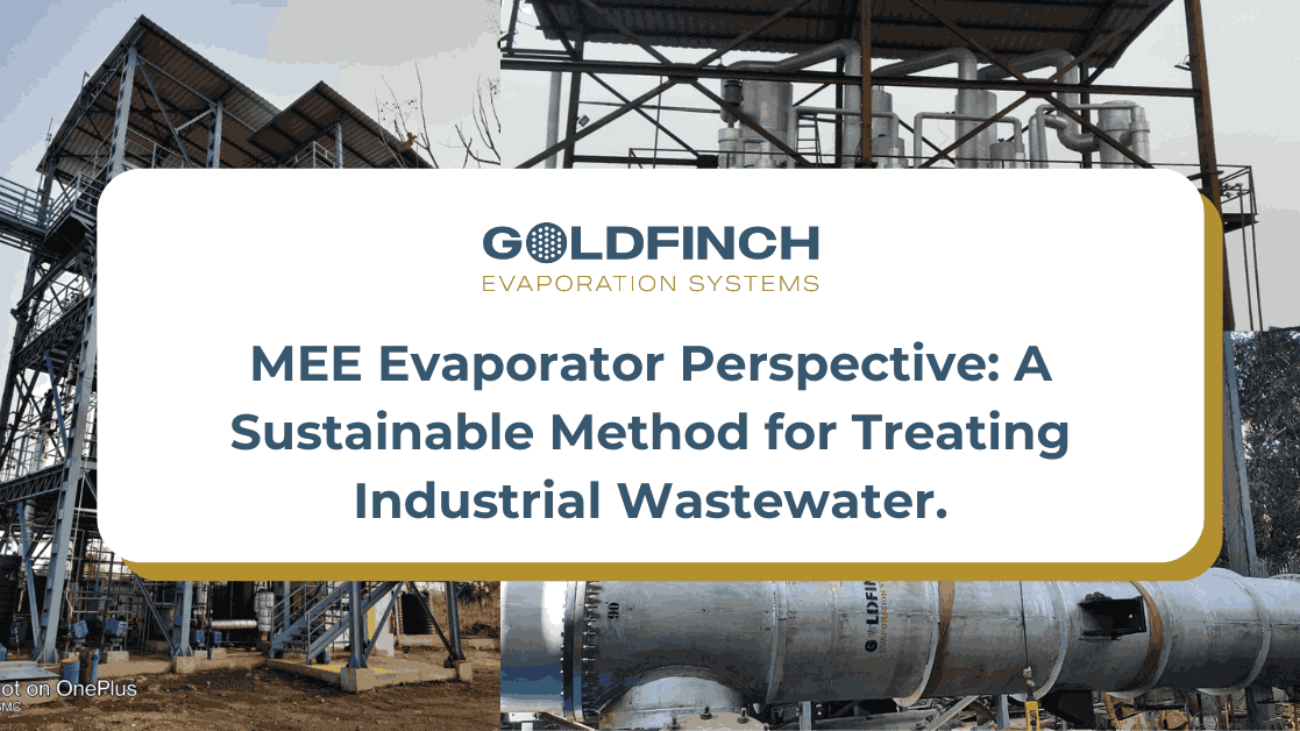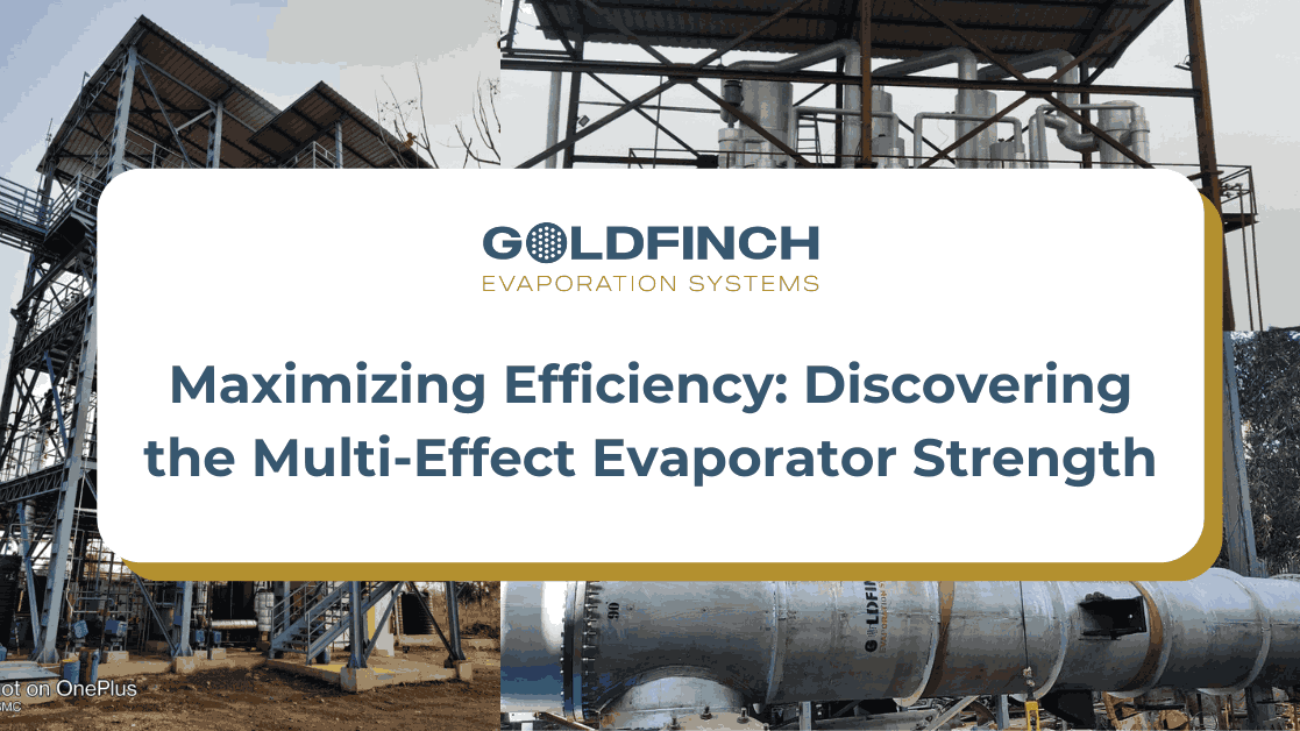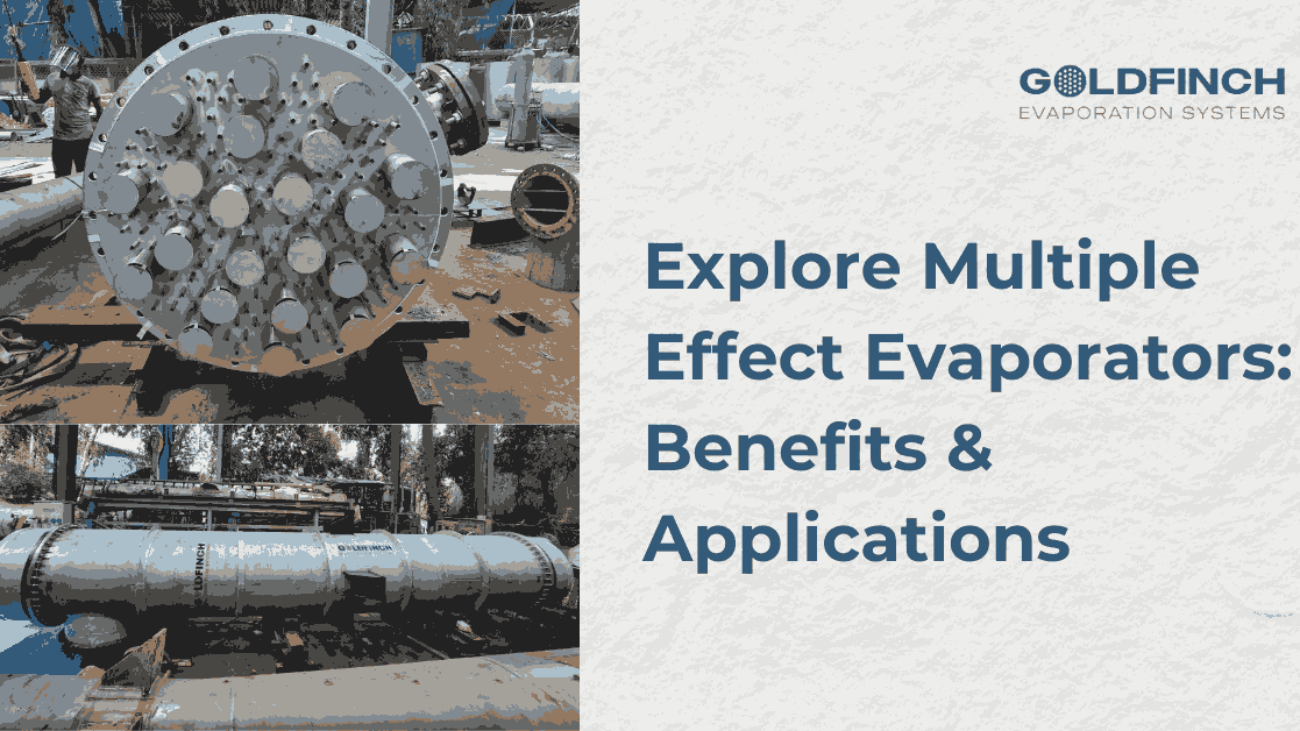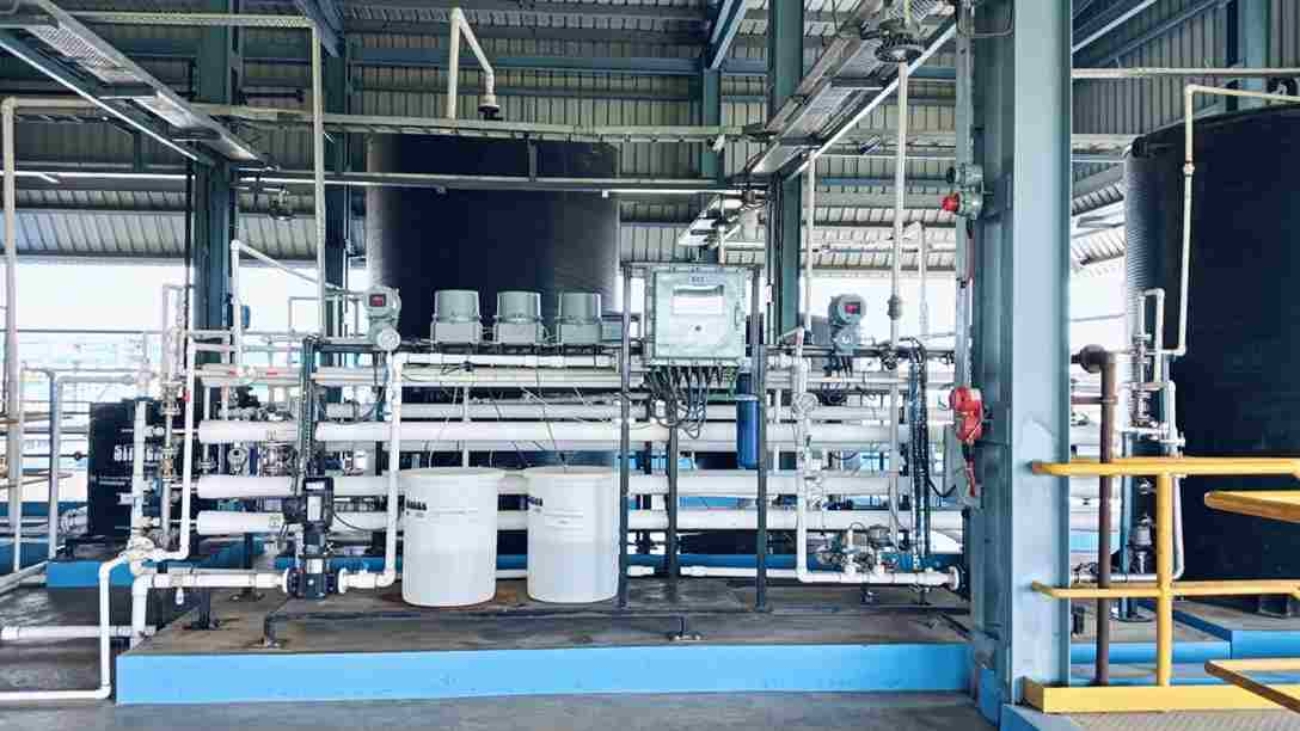Introduction: Role of MEE Evaporators in Industrial Processes
In today’s industrial world, it is essential for businesses to encompass efficiency and cost-effective solutions. Multiple Effect Evaporators have seen an uprise in many industries, be it textiles, chemicals, pharmaceuticals, or the food processing industry.
As the leading supplier of multiple-effect evaporators in India, Goldfinch Evaporators addresses the growing demand for high-performance evaporation systems. These systems help businesses reduce energy costs while complying with environmental norms.
Partnering with the right multi effect evaporator manufacturer can truly benefit your business’s growth. Here’s how.
The science behind Multiple-Effect Evaporation: How it works
A multiple effect evaporator system is a vaporization plant that does the work of separating liquids by applying heat to them.
The MEE evaporator utilizes multiple stages of evaporation to efficiently concentrate a liquid solution, such as wastewater or product streams. By utilizing the latent heat from the vapor generated in each stage, MEE systems achieve high levels of energy efficiency, making them ideal for various industrial applications.
Single vs. Multiple Effect Evaporators: Why are industries shifting to Multiple Effect Evaporation
Traditional ways of evaporation, like the single effect evaporation systems, require large amounts of energy to enable the evaporation of liquids. This made such systems highly inefficient and expensive for use in large-scale industrial operations.
Here’s why the multiple effect evaporator system makes sense for industrial use:
- Cost Savings: Reduction in fuel costs as compared to traditional single effect evaporators
- Energy efficient: MEE evaporators need less energy due to the reuse of vapor, thereby bringing the steam usage down
- Easy to scale up: Multi effect evaporators can be scaled up for larger use cases with ease
- Better environmental compliance: Using MEE systems means lower water discharge and reduced pollution.
Selecting the right multi effect evaporator manufacturer for your needs
A multiple effect evaporator not only helps industries comply with environmental regulations but also assists in your business growth. Hence, it becomes essential to choose the right MEE manufacturer for your needs. One needs to look at various aspects of a multiple effect evaporator supplier, like:
- Experience: The supplier you choose should be experienced in the manufacturing and installation of such evaporators, with good technical expertise, as MEE evaporators can be complex to design and install.
- Customization: Every industry is different, and so the requirement of each business needs to be properly studied to design the evaporator so that it caters to the processes effectively and efficiently. Look for a manufacturer that can customize the effects, materials used, construction type, and level of automation to suit your business needs.
- Operation Support: Operating a MEE evaporator is a complex task that needs a team of technical personnel on site. Ensure that you discuss this aspect with the supplier before making a decision.
- After-Sales Service: It is important to opt for a manufacturer that provides a strong after-sales service, as it will impact your business in the long run.
- Maintenance: Check the annual maintenance contracts and the repairability of the supplier’s products, along with the spare part availability. This will impact the amount of downtime for the evaporator while ensuring long-term reliability and peace of mind.
Goldfinch Evaporators, being one of the top-tier multi effect evaporator manufacturers in India, will provide you with solid reliability, after-sales support, operation assistance, and world-class service. Having installed over 50 evaporation systems for several businesses belonging to varied industries, we pride ourselves on our industry expertise and sophistication.
Key benefits of MEE Evaporator & its application across industries
When it comes to thermal separation systems, nothing beats a Multiple effect evaporator in terms of energy efficiency due to its smart reuse of latent heat across the stages and effects. This makes it perfect for use in industries requiring concentration of fluids or dealing with large volumes of wastewater.
Multiple effect evaporators pose some key benefits, such as reduced operational costs, efficient energy usage, environmental conservation, and improvement in production scalability.
When it comes to the application of multiple effect evaporators in various industries, they are:
- Pharmaceutical Industry
- Textile Industry
- Dyeing Industry
- Food & Beverage Industry
- Chemical Industry
- Dairy Industry
The main benefit of a MEE evaporator is the way it balances efficiency, compliance, and sustainability while treating high-volume solutions. Goldfinch Evaporators designs and manufactures Multiple effect evaporators for such industries, making them grow to new heights.
Our in-house design and manufacturing will ensure great quality, energy-efficient design, and faster delivery of your evaporation systems.
Conclusion: Make the smart choice with Goldfinch
Multiple effect evaporators are a proven way to reduce operational costs and balance environmental compliance with business growth. Goldfinch Evaporators provides the perfect choice for your evaporation needs with our cutting-edge technology and innovative designs.
Our proven track record of successfully commissioning 50+ projects, supplying quality, and adhering to tight deadlines showcases our commitment to our clients’ satisfaction. Our Design team uses the latest software in thermal design to design its Evaporation systems. Our Evaporator designs are customized to achieve optimum capital and operating costs.
Choose Goldfinch as the right choice for your business. Contact us today.
Feel free to check out our LinkedIn page.

